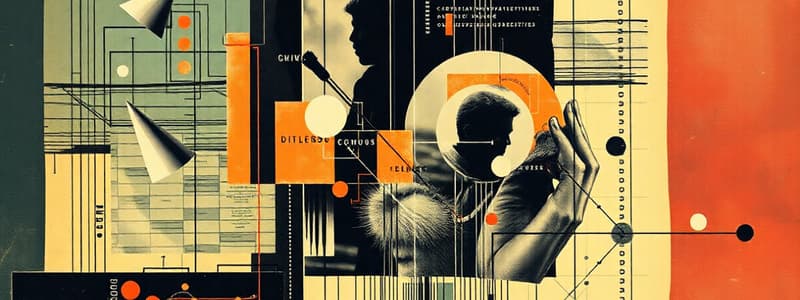Podcast
Questions and Answers
What is an algorithm?
What is an algorithm?
- A graphical representation of a code structure
- A programming language used for high-level coding
- A sequence of instructions for a computer to follow
- A step-by-step procedure for solving a problem (correct)
Which definition best describes pseudocode?
Which definition best describes pseudocode?
- A programming standard for writing executable code
- An algorithm expressed in simple English statements (correct)
- An effective step-by-step procedure in scientific notation
- A low-level language understood by computers
What role does a compiler play in programming?
What role does a compiler play in programming?
- It converts machine language to high-level language
- It translates source code into a machine-understandable format (correct)
- It executes programs directly without conversion
- It defines the structure of an algorithm
What does the term 'input stream' refer to?
What does the term 'input stream' refer to?
Which flowchart structure is used when a condition is evaluated as true or false?
Which flowchart structure is used when a condition is evaluated as true or false?
What is the primary characteristic of machine language?
What is the primary characteristic of machine language?
What does a flowchart's 'start' and 'stop' symbols represent?
What does a flowchart's 'start' and 'stop' symbols represent?
What is the purpose of identifiers in C++?
What is the purpose of identifiers in C++?
What type of language requires either an interpreter or a compiler?
What type of language requires either an interpreter or a compiler?
Which of the following structures provides repetitive execution of an operation?
Which of the following structures provides repetitive execution of an operation?
Study Notes
Algorithms
- An algorithm is a structured, step-by-step process for solving a problem.
- It's like a recipe with clear instructions to achieve a desired outcome.
- Algorithms must be finite, meaning they have a defined ending point.
- Pseudocode is a way to represent algorithms using human-readable language (English)
Computer Programming
- Programmers write sets of instructions called programs, to tell computers what to do.
- Machine language, consisting of 1s and 0s, is the lowest level of programming language.
- Mnemonic code uses letters to represent instructions, making programming more readable.
- High-level programming languages are closer to human language and need interpreters or compilers to translate code into machine language.
Computer Fundamentals
- Electricity powers computers, enabling them to function.
- Input streams are sequences of characters flowing from an input device (like a keyboard) to the computer.
- Output streams are sequences of characters sent from the computer to an output device (like a monitor).
Flowcharts
- Flowcharts are visual representations of algorithms that show the order of steps.
- They use symbols to illustrate different operations and the flow of data.
- Common symbols include start/stop, input/output, process, and decision making.
Flowchart Structures
- Sequence Structure: Steps in a flowchart are executed in a linear order, one after another.
- Selection Structure (Conditionals): The flowchart branches based on whether a condition is true or false.
- Repetition Structure (Loops): Steps are repeated until a specific condition is met.
C++ Programming
- In C++, all variables need unique identifier names.
Studying That Suits You
Use AI to generate personalized quizzes and flashcards to suit your learning preferences.
Description
Test your knowledge of algorithms, programming concepts, and computer fundamentals in this engaging quiz. Explore the structured steps that define algorithms, the intricacies of programming languages, and the essential components that make computers function. Challenge yourself and enhance your understanding of these vital topics in computer science.




